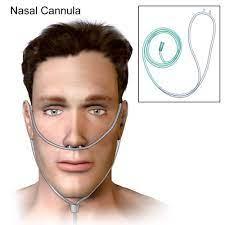A client who had surgery 3 days ago is sitting with head of bed at 75 degrees and requests to be repositioned. Which instruction is most important for the nurse to provide to the unlicensed assistive personnel (UAP)?
Have the client hold a pillow over the abdomen to cough and deep breathe.
Encourage the client to eat all of the meals that are sent.
Offer fruit juice at least twice during both the day and evening shifts.
Lower the bed prior to helping the client to move up in bed.
The Correct Answer is D
Choice A: Have the client hold a pillow over the abdomen to cough and deep breathe is not the most important instruction because it is not related to repositioning. This is a good practice to prevent respiratory complications after surgery, but it can be done at any time.
Choice B: Encourage the client to eat all of the meals that are sent is not the most important instruction because it is not related to repositioning. This is a good practice to promote nutrition and healing after surgery, but it can be done at any time.
Choice C: Offer fruit juice at least twice during both the day and evening shifts is not the most important instruction because it is not related to repositioning. This is a good practice to prevent dehydration and constipation after surgery, but it can be done at any time.
Choice D: Lower the bed prior to helping the client to move up in bed is the most important instruction because it reduces the risk of injury and falls for both the client and the UAP. This is a safety measure that should be done before any repositioning.
Nursing Test Bank
Naxlex Comprehensive Predictor Exams
Related Questions
Correct Answer is D
Explanation
The correct answer is: d. Perform oropharyngeal suctioning.
Choice A: Irrigate the nasogastric tube with water
Reason: Irrigating the nasogastric tube with water is not appropriate when a client is choking and vomiting. This action could potentially worsen the situation by introducing more fluid into the stomach, increasing the risk of aspiration.
Choice B: Review the advance directive document
Reason: Reviewing the advance directive document is not an immediate action to take when a client is choking. Advance directives provide guidance on the client’s wishes for medical treatment but do not address acute emergency interventions.
Choice C: Elevate the head of bed 45 degrees
Reason: Elevating the head of the bed to 45 degrees can help reduce the risk of aspiration by using gravity to keep stomach contents down. However, this action alone is not sufficient to address the immediate choking hazard.
Choice D: Perform oropharyngeal suctioning
Reason: Performing oropharyngeal suctioning is the correct action because it directly addresses the choking hazard by clearing the airway of vomit and other obstructions. This is a critical step to ensure the client’s airway is clear and they can breathe properly.
Correct Answer is B
Explanation
Choice A Reason: This is incorrect because decreasing the flow rate to 1 L/minute can compromise the client's oxygenation and worsen hypoxia. The client's oxygen saturation level is below the normal range of 95% to 100%.
Choice B Reason: This is correct because placing padding around the cannula tubing can prevent pressure ulcers and skin breakdown caused by friction and irritation from the tubing.
Choice C Reason: This is incorrect because applying lubricant to the cannula tubing can increase the risk of infection and inflammation of the nasal mucosa. Lubricant should be applied sparingly to the nares only if needed.
Choice D Reason: This is incorrect because discontinuing the use of the nasal cannula can endanger the client's life and cause respiratory failure. The client needs supplemental oxygen to maintain adequate oxygenation.

Whether you are a student looking to ace your exams or a practicing nurse seeking to enhance your expertise , our nursing education contents will empower you with the confidence and competence to make a difference in the lives of patients and become a respected leader in the healthcare field.
Visit Naxlex, invest in your future and unlock endless possibilities with our unparalleled nursing education contents today
Report Wrong Answer on the Current Question
Do you disagree with the answer? If yes, what is your expected answer? Explain.
Kindly be descriptive with the issue you are facing.
